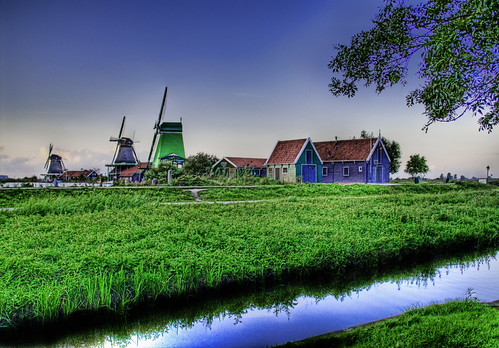
Photo of Dorset by Tom Heller used under a Creative Commons license.
Geoffrey Household, Rogue Male (NYRB, 2007).
A thriller, originally published in 1939. The unnamed protagonist stalks a European dictator (plainly Hitler, I should say) as if to shoot him, but is caught before he can pull the trigger. He manages to escape, and makes his way back to England, but then realizes that the hunter has become the hunted now, and eventually is driven underground (in the rural Dorset downs) in the most literal way. To relate more of the plot would be to say too much. While Household doesn’t say specifically where his protagonist hides, I read somewhere (can’t recall where now) that someone has located the precise hillside in Dorset.
In addition to providing this bio of Household, Wikipedia lists several adaptations for the radio and screen. Here is Household’s obituary (New York Times). Google Books lets you take a look. Orin Judd calls it somewhat dated but curiously timeless. Bill Pronzini says it’s a nightmarish novel, filled with breathless chases, fascinating detail-work, and images that will haunt you. According to Bookride, it inspired Rambo. Seana (who picks books the way I do) says it’s a classic cat-and-mouse tale, a vivid and gripping read. Shane Richmond (26 Books) calls it a thoroughly satisfying read with amusing observations about the English class system. Nancy O says Household sets the tension level high to start, and then ratchets it up. Charles Taylor (The Boston Phoenix) says Household and his protagonist display a sensitivity to the English countryside, a sense that it will provide shelter and food and also spiritual ease. Curious Presbyterian calls it the best “man on the run” thriller ever written. David (Permission to Kill) would put it alongside any modern thriller for pure and simple brutal thrills (I believe that’s meant as praise). Sarah Weinman says the philosophical meditations are subtle but forceful. The Spy Project has spoilers and analysis that might be best read after the novel. Nick Jones says the hero is most compelling when he’s in his burrow. J.D. Tuccile sees lessons about the dangers of government powers. Mitch Edgeworth saw a good bit of dry wit sprinkled throughout, but not the tension that other reviewers see. Simon Lewis, who calls it brilliant, intense and a bit weird, says the protagonist hides in a wood near Lyme Regis. A Usenet poster, johngoldfine, is more precise: he says the hero hides in the country between Lyme Regis, Beaminster and Dorchester.








